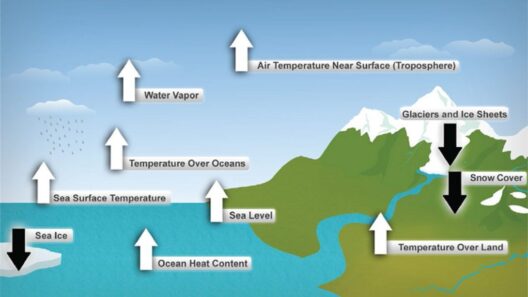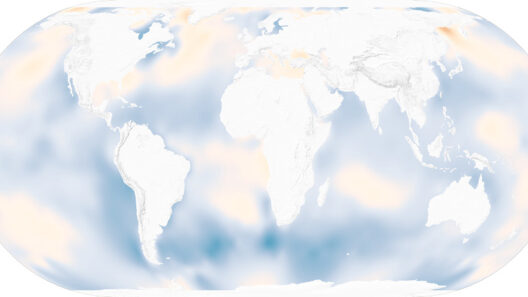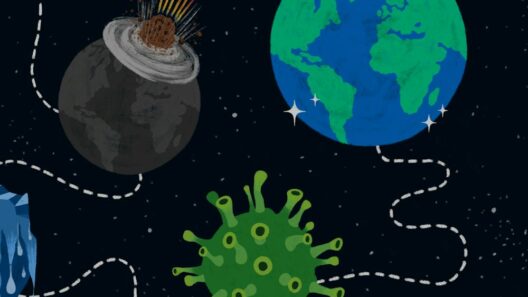The intricate web of life on Earth is like a complex tapestry, interwoven with threads of various species, ecosystems, and climates. Yet, as global warming advances, this delicate fabric is beginning to fray at the seams. This phenomenon poses an existential question: how do we, as stewards of the planet, confront the looming threat that climate change imposes on animals, plants, and the environment as a whole? The challenge lies in understanding the multifaceted impacts of global warming and the urgent necessity to ameliorate its detrimental effects.
To comprehend the ramifications of global warming on biodiversity, one must first grasp the fundamental principles of ecosystems. These systems are dynamic and made up of innumerable interactions among organisms and their physical environment. The stability of this balance is paramount, and yet, researchers have observed that higher global temperatures disrupt these interactions in profound ways. For instance, coral reefs, often referred to as the “rainforests of the sea,” are particularly susceptible to rising ocean temperatures. Coral bleaching, a phenomenon wherein symbiotic algae are expelled from coral due to stress, has escalated dramatically over the last few decades. As these vibrant ecosystems degrade, the myriad of marine species that depend on them for sustenance and shelter face potential extinction.
The implications extend beyond marine environments. Terrestrial ecosystems are equally vulnerable to climatic shifts. The geographic distribution of plant species is changing as temperatures rise; they are migrating towards cooler areas, often higher altitudes or latitudes. But what happens to the animal species that rely on these plants? Many may find themselves in a precarious position, unable to adapt swiftly to these changes. Disrupted plant-animal interactions can lead to the decline in pollination rates and the availability of food sources, exacerbating the struggle for survival.
Moreover, consider the observable shift in migratory patterns among birds and other wildlife. As temperatures rise, the cues that dictate migration schedules are altered. Birds may begin their journeys earlier or later than necessary, leading to mismatches in the timing of their arrivals and the availability of food resources. This disconnect can result in lower reproductive success and declining populations, thus amplifying the problem of biodiversity loss.
Yet, it is not solely the faunal changes that deserve attention. Global warming significantly impacts plant physiology as well. Higher concentrations of carbon dioxide can initially enhance photosynthesis, but this benefit is often offset by increased temperatures and altered precipitation patterns. Droughts and extreme weather events, fueled by climate change, can lead to rampant wildfires, destroying vast swathes of forests and grasslands. The loss of plant life translates directly to habitat loss for numerous species, further compounding the challenges of survival in an already precarious environment.
As ecosystems unravel, the environment suffers cascading effects that reach far beyond individual species. The loss of biodiversity diminishes the resilience of ecosystems to withstand disturbances, making them more susceptible to pests, diseases, and the very effects of climate change itself. This vicious cycle poses a formidable challenge: how do we halt the relentless decline of our natural world? It brings us back to our initial inquiry—what can we do to mend the fraying threads of life?
Addressing global warming and its impact on biodiversity requires swift, coordinated action on multiple fronts. Transitioning to renewable energy sources is essential to mitigate greenhouse gas emissions. By investing in solar, wind, and hydroelectric power, we can reduce our carbon footprint and usher in a new era of sustainable energy. Additionally, reforestation and habitat restoration initiatives aim to rebuild ecosystems that serve as vital buffers against climate impacts. Forests play a crucial role in carbon sequestration, absorbing carbon dioxide from the atmosphere and mitigating the effects of climate change.
Policymaking must also prioritize conservation efforts. The protection of endangered species and their habitats is critical to maintaining the integrity of ecosystems. Implementing stringent regulations against pollution and deforestation would contribute significantly to the health of our environment. Moreover, supporting local communities in sustainable land-use practices can cultivate a harmonious relationship between people and nature, enhancing both livelihoods and biodiversity.
Education and awareness are indispensable components of this multifaceted solution. The more individuals understand the intricacies of ecosystems and the impacts of their choices, the more likely they are to advocate for sustainable practices and policies. Engaging young minds in environmental stewardship fosters a sense of responsibility towards the planet, ensuring that future generations continue the fight against climate change.
In conclusion, the threats posed by global warming to animals, plants, and the environment are indisputable and multifarious. The interconnectedness of life establishes a profound imperative to act. While the challenge is immense, there exists a collective power in awareness, innovation, and dedication. Can we imagine a world where future generations thrive in a balanced ecosystem, where every thread in the web of life remains unbroken? By embracing the spirit of stewardship, we may yet salvage the beauty and diversity of our planet.






